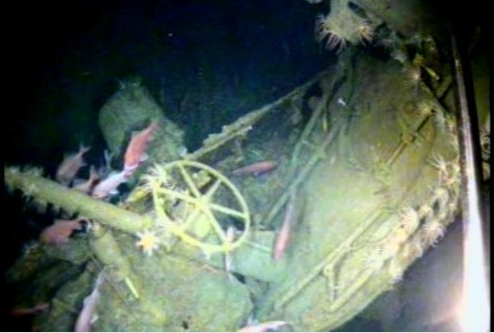Lost Australian World War I Submarine Found After 103-Year Search

After searching for 103 years, Australia’s Allied and Royal Australian Navy submarine, which was lost during the World War I, has been found.
The ruins of one of the oldest war vessels which disappeared off the coast of Rabaul, Papua New Guinea in 1914, was discovered off the Duke of York islands in Papua New Guinea. At the time of its disappearance, it was carrying 35 Australian and British crew members.
“Australia's oldest naval mystery has been solved," Defense Minister Marise Payne said, ABC News reported. "It was … a significant tragedy felt by our nation and our allies.”
Following the discovery of the vessel, the officers and sailors who lost their lives in the submarine were given commemorative service.
‘FOUND’ - Australian Navy Submarine HMAS AE1 located after 103 years https://t.co/tXKt3CqhBX #AusNavy #NavyDaily pic.twitter.com/WKaHdhkhrA
— Royal Australian Navy (@Australian_Navy) December 20, 2017
"The boat and her crew, who've been on eternal patrol since 1914 … have now been found," Payne said. "I truly trust that this discovery will bring peace of mind to the descendants of the families of the crew who lost their lives on board and perhaps in time it may also enable us to discover what caused the submarine to sink."
The Australian government previously funded 12 expeditions over the years to find the lost submarine without much success. It, however, narrowed down the search zone of the mission and helped naval experts make improvements in their technologies to help pinpoint the location of the submarine wreck.
Last week, the 13th and final search began on board the vessel Fugro Equator and the lost submarine was finally discovered on Wednesday 300 meters (0.2 miles) underwater near the Duke of York Islands.
The exact location of the wreck has been kept under wraps by the government in order to preserve the underwater site and plan for an elaborate commemoration in the near future.
The crew onboard the Fugro Equator was confirmed that the vessel they came across was indeed the lost submarine that they were looking for via a deep crop camera. In addition, the underwater drone was also used to scour the area. The drone floated 40 meters (984 feet) above the seabed till it came upon the remains of the submarine wreck.
"The final confirmation in this particular case, having found an image on the seabed, was to put a camera down alongside that wreck and actually be able to determine that it had the features that we say belonged to AE1," Chief of Navy, Vice Admiral Timothy Barrett said.
Barrett said that the discovery of the age-old submarine upholds a long-standing tradition of the navy. "For the Navy, it demonstrates the persistence of a view that fellow mariners always have and that is, we always seek to locate and find where those who sacrificed so much for their country actually laid at rest,” Barrett said.
The last search party was funded by the Australian government, the Silentworld Foundation, The Australian National Maritime Museum and Find AE1 Ltd.
The 800-tonne vessel was the first of its kind for the Australian fleet and was 55 meters (180 feet) long. It had only served for seven months after which it had been sent from Sydney to capture what was then German New Guinea. Following the news that Germany had surrendered the colony, the submarine disappeared.
Although investigators are yet to look into the possible reasons behind the submarine getting lost, retired rear admiral Peter Briggs, who worked on the search, said that it could have been a “diving accident.”
“The submarine appears to have struck the bottom with sufficient force to dislodge the fin from its footing, forcing it to hinge forward on its leading edge, impacting the casing,” he said, the Guardian reported.
© Copyright IBTimes 2025. All rights reserved.






















